SCIAENIDAE
Croakers
By Hiroyuki Motomura
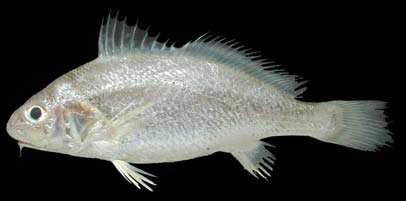 Dendrophysa russelli |
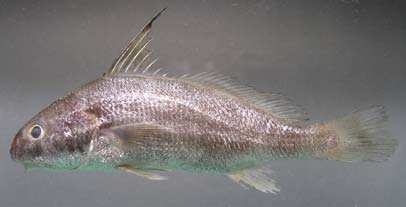 Johnius amblycephalus |
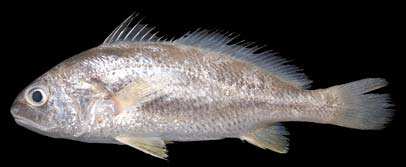 Johnius borneensis |
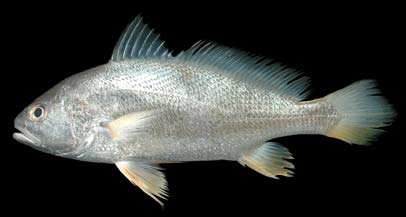 Nibea soldado |
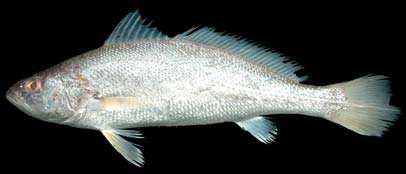 Otolithes ruber |
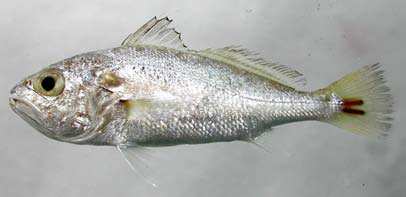 Pennahia anea |
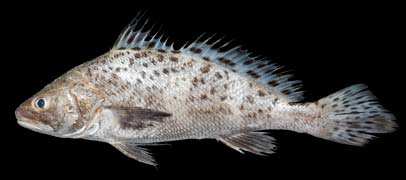 Protonibea diacantha |
|
Small to large fishes, reaching 200 cm SL. Body moderately elongate, compressed. Body, except snout tip, completely covered with scales. Enlarged teeth always form outer series in upper jaw, inner series in lower jaw; vomer and palatines without teeth. Dorsal fin continuous, with deep notch between anterior and posterior portions; with VIII to X spines anteriorly and I spines and 21 to 44 soft rays posteriorly; base of posterior portion much longer than anal-fin base. Anal fin with II spines and 6 to 12 soft rays. Caudal fin emarginate to pointed, never deeply forked. Pelvic fins with I spine and 5 soft rays. Lateral line scales extending to posterior margin of caudal fin. Swimbladder well developed with thick wall, with hornlike, tube-like, or arborescent appendages. Color: variable from silvery to black; with spots and dark bands in some species. Similar families occurring in the area. The following combination of characters distinguish Sciaenidae from all other families: anal fin with II spines and lateral line scales extending to posterior margin of caudal fin. Remarks. Occurs in coastal waters, estuaries and rivers. No records from oceanic island groups distantly separated from a continental shelf. Usually found over muddy or sandy bottoms. |

|
|